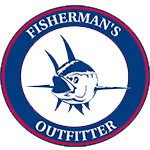
What is your line style?
January 31, 2020
Happy Valentine’s Day
February 14, 2020Fishing with Spreader Bars.
By Joe Curcuru,
Fisherman’s Outfitter, Gloucester, MA
As fishermen, we are all on the water with a common goal and that is to catch fish. At Fisherman’s Outfitter, we understand what kind of effort is put into fishing tournament or even a weekend trip to the edge. Trying to figure out the best spread to pull behind your boat can drive one insane, especially during the offseason.
You will first need to understand what a spreader bar is designed to do. What is a spreader bar? A spreader bar is one lure with a multiple baits, rigged onto a metal bar to help spread the baits into a desired pattern. There should only be one hook on your spreader bar, which can consist of dozens of baits. The lure with the hook or “stinger” as most call it, should be the last bait in the center line or mainline. This represents the weak link or straggler, which is the most common to be singled out by a predator. Spreader bars create the illusion of partial bait school that has been separated from a larger, main school of baitfish. This is very common to see when predator fish are feeding on a bait ball or giant school of forage fish. Spreader bars are designed to be trolled on the surface, skipping across the top of the water. Think popper fishing, but on the large scale!
The first consideration when looking to purchase or build your spreader bars should be your target species. What are you looking to catch, what do these fish primarily feed on? Some species are more effectively fished for at higher speeds and require smaller baits (6-10”) to be fished effectively, usually between 5-8kts. The head styles of your spreader bar baits will allow you to troll at these higher speeds. Larger fish seem to prefer the bars that are trolled at slower speeds, roughly 3.5-4.5kts and larger profile baits (12”-18”.) These larger baits can best trolled at the lower speeds due to the larger surface area of the lures.
The second and equally important is the gear you have to troll your spreader bars. Maybe you have to settle for a smaller spreader or need to purchase larger gear to handle the bars you plan to use. Spreader bars put substantially more strain on your gear than traditional single baits, lures or daisy chains (multiple baits rigged on a single line.) Generally, you will need at a minimum of 50lb fishing line better with 80lb or greater. The spreader bars, due to their larger footprint create more drag in the water and require extra measures to ensure fish and gear are not lost due to breakage.
Now onto one of the hottest debates when purchasing or building your spreader bars, lure colors! The general rule of thumb is, bright colors for bright conditions (bright sunshiny days) and dark colors for dark conditions (early morning, dusk or overcast days.) The spreader bars will be pulled on the surface and the fish will be attacking them from below and having a color that sticks out the best seems to work great. You should have an assortment of colors to be able to switch between if fish are coming to your lures, but not attacking them. Most of our spreader bars come with a heavy duty snap swivel on the mainline to switch out your stinger bait. This saves you time from re-rigging your stinger to a more desirable color or lures style and ultimately putting more fish on the deck.
Bird Bars. Another style of spreader bar is referred to as a Bird Bar and or Splash Bar. These are spreader bars that incorporate either a single teaser bird or multiple teaser birds to create more fish attracting splash. Birds are hard teaser lures that have wings on the forward part of them to cause side-to-side wobbling that throws water into the air, looking like a feeding frenzy. Most anglers find that when sea conditions are flat calm, bird bars raise more fish and generate more strikes. The addition of birds will also help create lift on your spreader bar, allowing you to troll it further behind your boat. If your bars are dragging through the water and look unnatural, this can put fish off and deter them from striking your lures. This is also where having a good set of sturdy Outriggers and heavy duty release clips will help you. Having your spreader bars pulled from a higher tow point makes your lures look more natural. Birds have really helped anglers that do not have the ability or desire to install outriggers on their boats.
Another addition to keeping your bars higher on the surface are floats. For small boat anglers, the addition of floats have helped many fishermen effectively fish with spreader bars. Building spreader bars with foam floats inside the squid bodies keep them from sinking when the lure is stationary or trolled through the water. This helps with not only fishing, but when a fish is hooked. If you slow the boat to fight a fish after a strike, your other spreader bars can sink and tangle. This is common when you have multiple spreader bars in the water and not enough crew to clear the lines.
